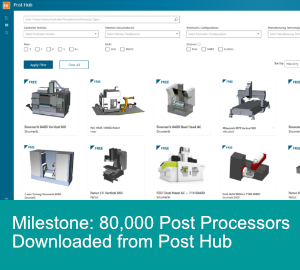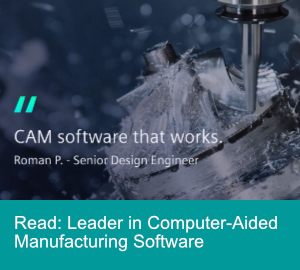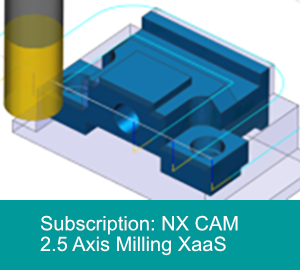How this Job Shop Grew Capacity Without Expanding Footprint
Sponsored ContentThis shop relies on digital solutions to grow their manufacturing business. With this approach, W.A. Pfeiffer has achieved seamless end-to-end connectivity, shorter lead times and increased throughput.
Share
W.A. Pfeiffer is in many ways a typical job shop. It makes precision components for a wide variety of applications such as optical devices, machinery, and medical technology. But Pfeiffer is also quite exceptional in its mastery of digital production technologies. This has enabled the shop to significantly increase throughput without expanding its facility through more efficient use of all its production assets. It’s how Pfeiffer manages to compete globally with only 25 employees and 16 CNC machines from their facility in Zirndorf, Germany.
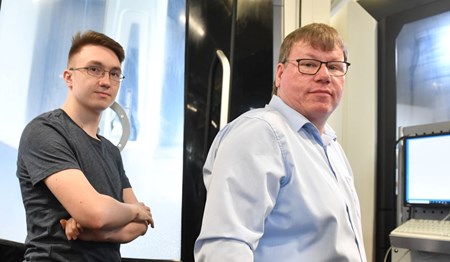
Andres Pfeiffer (right) transformed his job shop through digital manufacturing practices. To the left is CNC Programmer and Machinist Denis Münch.
Like many job shop leaders, company Owner & General Manager Andreas Pfeiffer wanted to grow the business but faced obstacles. It would be difficult to bring new capabilities to their location as the facility cannot be physically expanded further. Because of the physical constraint, Mr. Pfeiffer determined, “We need to utilize technology to grow the business using the most innovative machines and software solutions.” Pursuing that strategy, Pfeiffer was able to achieve thorough digitalization of the entire business, from order entry through final production.
Pfeiffer took on the challenge with the support of Siemens Xcelerator, from Siemens Digital Industries Software, which is a portfolio of integrated software applications designed to bring new efficiencies to manufacturing by providing advanced and integrated solutions for each step of the manufacturing process. The big ideas here are to:
- Create a single, reliable repository of shop and job information to serve all business and manufacturing needs.
- Establish a digital twin of the manufacturing operation to discover and mitigate inefficiencies and to better plan for maximum utilization of production assets.
- Achieve higher levels of automation both during planning and on the shop floor using the latest manufacturing technologies.
As Siemens puts it, “Xcelerator allows your engineers, suppliers, vendors, partners and customers to work simultaneously from a single source of truth anytime, anywhere, from any device.”
Here is how W.A. Pfeiffer deployed these capabilities to build a better business.
Starting with PLM
While many manufacturing people are familiar with Product Lifecycle Management (PLM) software, it is most often associated with managing product design data for design and engineering people in large enterprises. However, as PLM technology has matured, its development has increasingly focused on providing product and manufacturing information in a way that can play a significant role in process planning and execution on the shop floor, even for small part manufacturers.
This is how W.A. Pfeiffer, a job shop, uses PLM. Company CEO Andreas Pfeiffer says, “The goal is to achieve higher production automation and end-to-end connectivity so that we can reduce set-up times and minimize throughput times.” They use a product from Siemens called Teamcenter, a PLM software solution that can:
- Search, find, and reuse product and manufacturing information.
- Access and build a bill of materials (BOM).
- Initiate and participate in change processes.
- Manage product-related and manufacturing data, including designs, NC programs, and shop documentation.

Opcenter APS creates an accurate digital model of the entire production environment. This is where the schedule is created and optimization opportunities can be discovered.
This information repository provides the backbone of W.A. Pfeiffer’s entire digital manufacturing system. Integrating that data with all stakeholders in the process chain is what enables improvements in almost every aspect of the business.
Building the Digital Thread in the Job Shop
Once an order is received, it is first created in the shop’s ERP system and then all job data and CAD files are entered into Teamcenter. From this central store design data is seamlessly exported into NX CAD/CAM, the shop’s system for CNC programming. They also apply a Siemens product called Mcenter which is used for tool management, CNC program management, and overall equipment effectiveness (OEE) analysis.
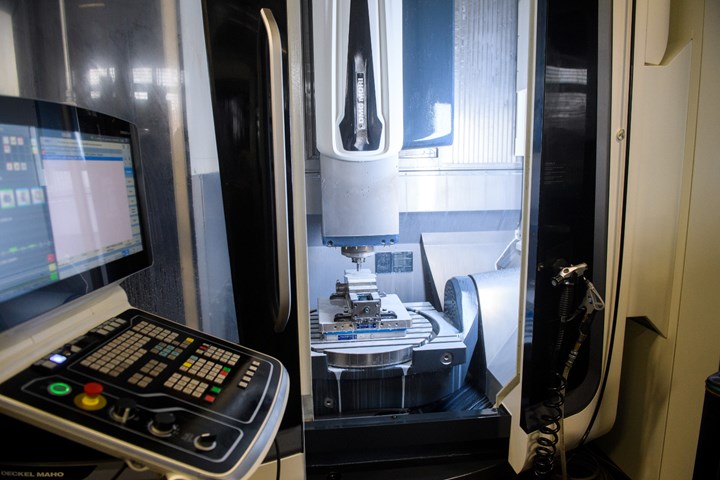
Digital twin technology enables programmers to program in the context of the machine, generating intelligent toolpaths that can avoid obstacles.The approach speeds part programming and improves utilization of the shop’s sophisticated production assets.
The NX CAM system plays important roles in several ways:
- Comprehensive capabilities allow Pfeiffer to use one CAM system to program all their CNC machines (vs. multiple CAM systems for different machines or applications).
- The “digital twin” technology enables programmers to program in the context of the machine, generating intelligent toolpaths that can avoid obstacles.
- Modern and automated programming techniques enable Pfeiffer to speed up toolpath generation and standardize processes.
- Integrated CAD tools are used to prepare part geometry for machining and define the setup assembly (vs. using a standalone, disconnected CAD system).
- Associativity between the machining operations and 3D part geometry provides greater flexibility to implement design or process changes.
Precise Scheduling is Key
Still another Siemens product called Opcenter APS is used for scheduling. It allows Pfeiffer to consider multiple constraints in order to run the shop as efficiently as possible. It allows scheduling to rank or weigh items to prioritize orders. Sequencing algorithms take into account resource availability and additional order requirements. It automatically applies sequence-dependent changeover times based on an operation’s attributes and allows overlaps and slack time between operations.
Opcenter creates an accurate digital model of the entire production environment. With it the shop can discover operational inefficiencies to improve a range of functions such as setup reduction, better job sequencing, materials availability and utilization, shopfloor documentation and more.
By integrating order planning into the digital manufacturing process, W.A. Pfeiffer witnessed immediate improvements in setup and throughput times. With this software, Mr. Pfeiffer says, “We can look at detailed information about the production orders and immediately see which resources are utilized when and how.” He says this capability has significantly improved customer and supplier relationships while internal communication and collaboration have become easier as well.
Automated Programming, Better CNC Programs, Faster Setups

The modern and automated programming techniques in NX CAM helps Pfeiffer’s engineers reduce programming time to generate high-performance machining operations.
As Pfeiffer was looking to improve the flow of information throughout the shop, they were also extremely focused on achieving greater efficiencies in their machining processes, throughput and equipment utilization rates. “The greatest challenges were the requirements for increased quality and shorter throughput times,” says Mr. Pfeiffer.
NX CAM software helped W.A. Pfeiffer improve productivity in both planning and production. The modern and automated programming techniques in NX helps CNC programmers save time and enables reuse of proven processes. The company leverages NX’s advanced capabilities to create innovative high-speed machining strategies and generate machine-specific NC programs using cloud-based postprocessing. Using new technologies, Pfeiffer was able to optimize toolpaths, resulting in fewer cutting passes. With the optimized cutting parameters, they were able to reduce cycle times by 25% while extending tool life.
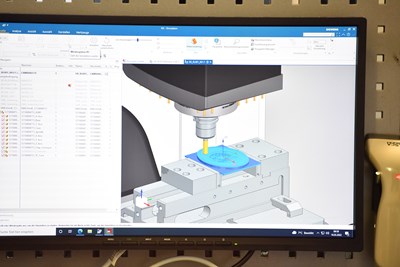
G-code based simulation in NX CAM provides visibility to the job shop’s machining processes, reducing mistakes and enabling further refinements to efficiency.
Because of the G-code-driven simulation in NX, engineers can digitally verify the generated operations. The advanced capability allows them to evaluate and optimize the processes before transferring them to production, saving setup time and increasing machine uptime. This capability helps this job shop run error-free and highly efficient part production.
As for setup, the digital infrastructure provides immediate access to information on tooling and materials so that everything a machinist needs to run a new job is available at the right time. Before setup, Pfeiffer assembles and measures new tools so that offset data can be directly entered into the machining center rather than having to touch off tools on the machine. That data, the full tool list and the part program are delivered to the machine via the Mcenter application.
By using the digital manufacturing capabilities of Siemens Xcelerator, W.A. Pfeiffer transformed their operation, manufacturing high-quality products and continuously growing the business, despite the highly competitive global market. Customer and supplier relations have significantly advanced, and internal collaboration is better streamlined by using this suite of software solutions.
Please visit the website for more information on Siemens Xcelerator.




